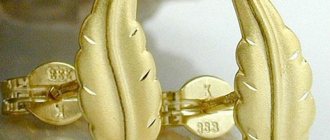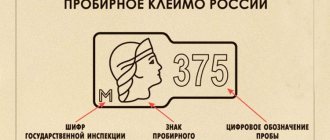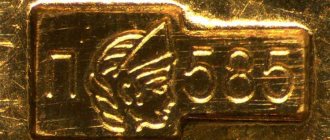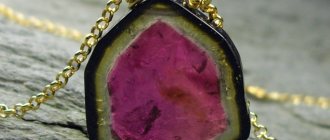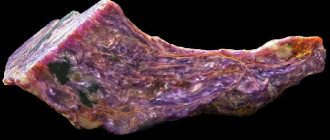One of the most popular training programs at the Russian Academy of Crafts and in vocational education in general is courses for jewelers. Jewelry training is conducted using proven methods and provides maximum opportunities for practice. At the end of the training, students complete a thesis, defend it and receive an official qualification document.
During the courses, students work with non-ferrous metal (brass), which completely replicates the physical and chemical properties of 14k gold, and use professional medium and refractory solder. Immediately after completing the courses, you can begin professional practice.
| Training mode | Schedule | Start date of training | Training period |
| Weekend daytime | Sat, Sun 10:00-17:00 | March 19, 2022 | 4 months |
| Weekend evening | Sat, Sun 17:00-21:00 | April 9, 2022 | 5 months |
| Evening | Mon - Fri 18:00-21:15 | March 2, 2022 | 4 months |
| Intensive | Mon - Fri 10:00-17:00 | December 1 | 1.5 months |
| Distance course | free schedule | November 2 | 6 months |
The course lasts 250 academic hours according to the program, regardless of the chosen schedule.
The cost of training is 75,000 rubles for a full-time course, 40,000 rubles for a distance course. One of the most popular training programs at the Russian Academy of Crafts and in vocational education in general is courses for jewelers. Jewelry training is conducted using proven methods and provides maximum opportunities for practice. At the end of the training, students complete a thesis, defend it and receive an official qualification document.
During the courses, students work with non-ferrous metal (brass), which completely replicates the physical and chemical properties of 14k gold, and use professional medium and refractory solder. Immediately after completing the courses, you can begin professional practice.
| Weekend, daytime Sat, Sun 10:00-17:00 | Start of training March 19, 2022 Duration of training 4 months |
| Weekend, evening Sat, Sun 17:00-21:00 | Start of training April 9, 2022 Duration of training 5 months |
| Evening Mon-Fri 18:00-21:15 | Start of training March 2, 2022 4 months |
| Intensive Mon-Fri 10:00-17:00 | Start of training December 1st Duration of training 1.5 months |
| stationary course free schedule | Start of training November 2 Duration of training 6 months |
The course lasts 250 academic hours according to the program, regardless of the chosen schedule. The cost of training is 75,000 rubles for a full-time course, 40,000 rubles for a distance course.
Apply for training!
We will contact you, answer your questions and sign you up for a course with a suitable training mode. You can make a prepayment of 50% for this course. Submit an application Register for the course and pay Pay (if there is an agreement)
College of Decorative and Applied Arts No. 36 named after. Carla Faberge
Here you can not only master the necessary techniques, but also develop your creativity and learn how to create designer jewelry. Children interested in the use of information technology in jewelry can take 3D modeling courses at college and learn how to create jewelry designs using special computer programs. To enter here, you must pass two entrance tests: drawing and metalwork. After each exam, interviews are held at which the advantages and disadvantages of the completed tasks are discussed. Applicants who have graduated from art school can have a presentation of their portfolio instead of a drawing exam. You can study on the basis of the 9th and 11th grades - in the first case, the training will take three and a half years, in the second 10 months.
What to do after training
After completing the course, a person has 3 options:
- Understand that this is not his calling and do not return to this topic.
- Learn to make small jewelry, do it as a hobby.
- Turn jewelry making into a profession.
Creating jewelry is not only about working with stones and metal. You can come up with designs, model, look for rare materials, and work as a jeweler’s assistant.
Those who like to endlessly look at other people's products can blog about jewelry and houses and review collections.
College of Arts and Crafts No. 59
Along with the Carl Faberge College, it is the most popular specialized secondary specialized educational institution in the field of jewelry. At one time, Sergei Dunin, a master engraver, teacher and author of numerous textbooks on jewelry and engraving, studied here, as well as current engineers from leading jewelry factories. Among the innovative educational methods, the technical school practices preparation for entrepreneurial activity in the field of decorative and applied arts. Like the students of College No. 36, students are given the opportunity to demonstrate their abilities in creative competitions. The duration of training in the specialty “Jeweler” is 1 year 10 months on the basis of the 11th grade and 3 years 6 months on the basis of the 9th grade. For successful admission, no additional creative tests are required.
VSHNI
The branch provides training in several areas, including the specialty “art metal”. Those who dream of becoming a jeweler should choose this specialty. The university has both a paid department and a budget department.
The curriculum, in addition to general disciplines, includes lectures and practical classes on the history of jewelry art, materials science, design, the basis of composition, gemology, and computer graphics. The cost of training per year is 193 thousand rubles.
You can also get a profession in college. In this case, the duration of study will be four years.
Moscow Polytechnic College
Training in the profession of “Jeweler” is carried out here only on the basis of the 9th grade and lasts for 2 years and 5 months. Admission of applicants is based on the results of the State Examination Test; the college does not conduct additional independent tests in this area. Upon completion of training, the graduate receives the qualification “Insert Cutter” - mainly his future work will be related to precious and semi-precious stones. The Moscow Polytechnic employs most of its graduates, and those who wish to study further enter universities under a shortened program. Among the higher educational institutions where young jewelers can continue their career are the Moscow State University of Design and Technology and the Moscow State University of Culture and Arts.
Profession jeweler - where to study? Universities
MOSCOW. The Moscow branch of the Higher School of Folk Arts (formerly the Institute of Traditional Applied Arts) - abbreviated as the Moscow branch of the Higher School of Scientific Research (formerly ITPI) Founded in 1938, this is one of the oldest educational institutions of this profile. It is believed that most of the jewelers working at Moscow art enterprises graduated from this particular school. The Moscow branch of the Higher School (the school itself is located in St. Petersburg) offers training in the specialty “Jewelry Art”. The university trains jewelry artists who master all stages of making a piece of jewelry from design to implementation in material. “Training assignments include natural and decorative images of natural motifs, still life, landscape, portrait, and human figure.” Duration of study: college (2 years 10 years) or institute (4 years) Address: Moscow, Musa Jalil St., 14, bldg. 2 Website of the Moscow branch: itpi-mf.ru Website of the Higher School of Folk Arts (St. Petersburg): vshni.ru Branches of the School in other cities (Omsk, Mstera, Ryazan, Fedoskino, Bogorodskoye, Sergiev Posad, Kholuy): vshni.ru /filialy.htm
MOSCOW. Moscow State Art and Industry Academy named after Stroganov (MSHPA) Jewelers at Stroganovka are trained at the department of artistic metal processing, which has been operating since 1945. During their studies, students become acquainted with a huge range of uses of artistic metal: jewelry, medals, cups, small plastics, dishes, and so on. Students copy museum exhibits, learn graphics, composition and technology. They practice in the university’s own workshops: blacksmithing, foundry, gypsum modeling, electroplating, jewelry, embossing, enamel, metalwork and tools. Starting from 2021, Stroganovka is launching a program of additional education in the specialties “Higher School of Jewelry Art” and “Higher School of Weaponry and Art Forging” with different duration and cost options. Our report from the defense of the department's theses 2019. Duration of study: 6 years Address: Moscow, Volokolamskoe highway, building 9 Website: mghpu.ru (Department of “Art Metal”)
MOSCOW. National Research Technological University (NUST MISIS) Department of Foundry Technologies and Artistic Processing of Materials (EcoTech) trains specialists in the field of artistic processing of metals (including jewelry casting). Based on the results of training at the department, you can receive the title of bachelor in the direction “03/29/04 – “Technology of artistic processing of materials” Website: general - misis.ru, specialized department - misis.ru/spglnk/fa4f3cc2, presentation of the department
MOSCOW. Russian State University of Design and Technology (RSU) named after Kosygin (Moscow State University of Design and Technology, MSUDT) Quote from the website, department page: “After the merger of MSTU named after. A.N. Kosygin to MGUDT in 2012, the FPI was reorganized into the Institute of Arts, and the department of artistic design of costume and shoes was renamed the department of Art of Costume and Fashion. Now the department provides training in the following profiles: artistic costume design, artistic jewelry design, sub-profile artistic design of knitwear.” Institute of Arts, Department of “The Art of Costume and Fashion”: the youngest direction in training is “Artistic Design of Jewelry”. Upon graduation from the university, the graduate receives a diploma as an artist-stylist in the relevant specialty. Website: general - kosygin-rgu.ru, Department of Costume and Fashion Art and teachers: kosygin-rgu.ru/institutes/iskusstv/kaf/hpk/index.aspx Our report from the exhibition of student works of Kosygin RSU Report from the defense of diploma projects-2019
MOSCOW. British Higher School of Design. — in 2015 announced a new program “Jewelry Design. Basic course", which has become a two-year course since 2021. This is an additional vocational education program (additional vocational education on the basis of secondary or higher education), upon completion of which graduates receive a state diploma of retraining. The course is designed both for training individual specialists who are committed to developing their own brand, and for craftsmen who are able to integrate into the technological chains of large productions and develop sketches of serial collections. By the way, in the fall of 2018, “Britanka” is also expected to offer a three-year British bachelor’s degree in jewelry design, with a British diploma and training in English (details in our announcement). Our report from the defense of diploma projects 2019. Address: Moscow, N. Syromyatnicheskaya st., 10, building 3. Artplay Design Center Website: https://britishdesign.ru/courses/jewellery-design/
MOSCOW: School of Design at the Higher School of Economics, bachelor’s degree, major “Jewelry Art and Object Design in Fashion.” The new bachelor’s program will open in the fall of 2021. “We train designers who develop collections of jewelry, adornments and accessories. Students receive in-depth training in the history of art, design and world culture..” (news about the program on JEWELIRUM). Our report from the defense of jewelry course projects at the HSE School of Design. Website: https://design.hse.ru/fashion-jewelry Address: Moscow, Malaya Pionerskaya, 12
MOSCOW: Moscow State University, Faculty of Geology, specialization in gemology You can obtain the qualification of a gemologist (specialist in precious stones) at the Faculty of Geology of Moscow University at different levels of higher education: undergraduate, five-year higher education, master's, postgraduate, doctoral studies. Gemology students study everything related to gemstones: general gemology, gemstone diagnostics, deposits, grading, precious stones, and the gem and jewelry market. Address: Moscow, GSP-1, Leninskie Gory, Main Building of Moscow State University, or st. Yaltinskaya, 11 Website of the gemological center of the geological faculty of Moscow State University: gem-center.ru
MOSCOW: Russian State Geological Prospecting University named after. Sergo Ordzhonikidze At the Russian State University for the Humanities, at the Faculty of Geological Exploration, training is conducted in the specialty “Applied Geology” (qualification - mining engineer). Graduates work as research assistants in research laboratories, experts in state mineralogical museums and the Assay Office. Duration of training: 5 years Address: Moscow st. Miklouho-Maklaya, 23 Website: mgri-rgru.ru
MOSCOW: Russian Economic University named after. G.V. Plekhanov Faculty of Economics of Trade and Commodity Science (FETT), Department of Commodity Science and Commodity Expertise. Training in the specialty “Commodity research and examination of goods”, one of the specializations is a commodity expert-expert of non-food products. Among the disciplines studied are “Commodity research and examination of jewelry goods”, “Commodity research and examination of metal goods”. Duration of training: 4 years Address: Moscow, Stremyanny lane, 36 Website: rea.ru
TOGLYATTI: Institute of Fine and Decorative Arts, Togliatti State University TSU offers training in jewelry art. This can be done by choosing the specialty “Artistic metal processing” at the Department of Decorative and Applied Arts. The quality of education is evidenced by the fact that several TSU students and graduates became winners of the MJDW modern jewelry design competition, the results of which were summed up in December 2021. The Institute of Fine and Decorative Arts has a bright “jewelry” history. Sharonov School operated within the institute . The school was developed by the founders - the family of jewelers Nikolai and Galina Sharonov, as well as their daughter Diana. This educational institution has become famous thanks to the work of both the founders and graduates - many of them won various jewelry design competitions, and also launched their own successful jewelry brands. In 2021, the founders of the School decided to develop their brand outside the walls of TSU, but according to students, the principles and spirit of learning they laid down continue to distinguish jewelry education at Tolyatti State University from other educational institutions. Website: Institute of Fine and Decorative Arts of TSU
EKATERINBURG: The Ural State University of Architecture and Art / Institute of Fine Arts of the Ural State Academy of Arts offers training in the specialty "Decorative and Applied Arts and Folk Crafts", where there are profiles in "Artistic processing of metal" and similarly - ceramics. Website: https://www.usaaa.ru/faculties/iii, VKontakte https://vk.com/uralgaxa About the Department of Decorative and Applied Arts https://www.usaaa.ru/faculties/iii/issuing/dpi Address : Ekaterinburg, st. Karl Liebknecht, 23
EKATERINBURG: Ural State Mining University At the department of “Artistic Design and Theory of Creativity” there is a specialty “The Art of Costume and Textiles (Jewelry Design)”. Website: https://edu.ursmu.ru/fakultety/ief/hptt.html
KOSTROMA: KSU (Kostroma State University) Among the directions at KSU are, for example, the Art of Costume and Textiles “artistic design of jewelry”, and decorative and applied arts and folk crafts “Artistic Metal”. On 04/13/17, the Rossiyskaya Gazeta published news that a laboratory for training specialists in the field of jewelry has opened at KSU, equipped with the latest equipment, including an American 3D printer (news on JEWELIRUM with a description of the printer). Website: https://ksu.edu.ru/
ROSTOV-ON-DON: DSTU (Don State Technical University) The university teaches in the specialty “Technologies of artistic metal processing” Address: Rostov-on-Don, Gagarina, 1 Website: https://www.donstu.ru/applicants/areas -of-training/.
KRASNODAR: KGIK (Krasnodar State Institute of Culture) - “decorative and applied arts and folk crafts, artistic metal” Website: kgik1966.ru
IRKUTSK: Federal State Budgetary Educational Institution of Higher Education IRNTU (Irkutsk National Research Technical University) Department of Jewelry Design and Technology.
Quote: “The department was created in 1995 to implement educational programs in interdepartmental specialization, which included training only in gemological diagnostics; later a license was obtained to train engineer-artists in the specialty “Technology of artistic processing of materials.” The department is also a co-organizer of the annual competition of jewelry and stone-cutting art, Silver Babr, as part of the regional exhibition Baikal Jewelry Salon. Website: istu.edu Department: https://www.istu.edu/deyatelnost/obrazovanie/instituty/in/gem/default
College of Automation and Radioelectronics No. 27 named after P.M. Vostrukhina
Almost all areas of study here are related to technology; only two professions stand out from the general list: environmental engineer and jeweler. The curriculum includes a lot of work in machine tool laboratories and jewelry workshops. The key task of preparation is to get the hang of it. It is worth noting that there are special groups for students with hearing problems. After graduating from college, young jewelers can continue their studies at a university: KAIR No. 27 cooperates with the Faculty of Technology Design of the Moscow City Pedagogical University. For those who do not plan to receive additional higher education and want to plunge headlong into work, the college promises guaranteed employment. You can enroll here both after 9th and 11th grade. There are no special requirements for jewelry applicants.
Where to become a jeweler
If an applicant has firmly decided to connect his life with the design, manufacture and repair of jewelry, he has 2 options:
- jewelry colleges;
- universities of jewelry making.
Going to college to become a jeweler after 9th grade is worth it for those who want to gain basic theoretical knowledge and practical skills and quickly begin their professional activities. If you want to study your specialty in more depth and get a fundamental education, you should choose a jewelry institute.
5. Polytechnic College No. 13 named after. P.A. Ovchinnikova
The “golden hands” of the college are specialists in metalworking, so jewelry making is one of the priority educational areas. As in the case of College No. 27 and the Polytechnic, the main emphasis here is on honing the technique of working with metals and stones and developing the necessary professional skills. But to say that they teach here not to create, but mainly to craft and make products according to a sample, would not be entirely correct - quite a lot of time is also devoted to training in the field of jewelry design, including computer design. At college, students carry out production orders from various enterprises. On the basis of the 9th grade, training lasts 3 years and 5 months, on the basis of the 11th grade - 1 year and 10 months. Admission is carried out without entrance exams based on the results of the State Examination and Unified State Examination.
What will you learn
- Work correctly and safely with jewelry tools and use a gas torch for soldering.
- Consider the properties of precious metals and stones when creating jewelry.
- Design designer jewelry using sketches and drawings.
- Perform basic operations used in the manufacture of jewelry: melting, forging, rolling, rolling, drawing, marking, drilling, sawing, filing, soldering, grinding and polishing, setting.
- Make three types of fastenings (blind and pronged, corner - additionally).
- Create artistic ornaments, work in cold and hot enamel techniques.
You will study the theoretical material necessary for work and complete several training assignments, gradually mastering the techniques of the craft. And in your diploma you will show all the skills you have acquired: you will make a sketch and drawings, use stones in your work, at least five metal parts and two types of settings. And create a real masterpiece!
Who will benefit from the courses?
Jewelry modeling courses will be useful for those who love to create precious jewelry and costume jewelry. In lessons for beginners they gain basic knowledge, and at the next level they improve their skills. Professional courses are suitable for those who are familiar with the requirements for artistic decoration and technical standards. It is advisable to know the properties of the material you will be working with. You will need the ability to read blueprints and draw sketches. It is important to have artistic ability.
3D jewelry modeling courses are needed for those who want to get into jewelry making:
- learn to make jewelry yourself as a hobby or craft;
- improve your skills;
- get a new specialty.
Future jewelers must have special personal qualities: creative thinking, ability to do manual work, and an eye for craftsmanship. This activity is suitable for those who have good tactile sensitivity and developed fine motor skills, who are diligent, neat, and attentive.
Karl's Workshop (CAO)
Address : metro station Tretyakovskaya, Bolshaya Ordynka st. 13/9 b2 Website : https://www.masterkarl.ru Telephone Cost : from 700 rub. per course
There are several training programs, everyone can choose what they need to study. Classes take place in a workshop where all the necessary equipment is available.
Studying programs:
- Trial lesson “Ring with an inscription.” Number of lessons: 1 x 1.5 hours.
- Basic course. Number of lessons: 8, 1.5 hours each. An advanced course in jewelry making, after studying which you will feel calmer and more confident, and maybe you will find your life’s work.
- Coin ring. Number of lessons: 1 x 1.5 hours. Here you will learn how to make a magnificent ring from any coin, which you will make with your own hands.
- Casting tin soldiers. Number of lessons: 1 x 1.5 hours.
- Ring with forged texture. Number of lessons: 4 x 1.5 hours. During the classes, the entire process of creating a texture will take a small amount of time, but the result will exceed your expectations.
- Jeweler "Starter pack". Number of lessons: 8, 1.5 hours each. In this course, participants will be introduced to the culture of aesthetics, theory and practice of jewelry making.
- Wedding rings. Number of lessons: 3 x 1.5 hours. You will have to learn to do everything that a jewelry maker does: filing, melting metal, grinding, polishing, etc.
- 3D modeling. Number of lessons: 8, 1.5 hours each. By the end of the training, you will be able to perform the most difficult tasks. You will learn how to create the best jewelry in three dimensions.
- Ring with texture. Number of lessons: 2 x 1.5 hours. You will learn how to make a textured ring using silver or brass. Nothing complicated. By the way, the texture of the ring is unique and inimitable. Each student will make an original product on their own. You will be guided by an experienced master who is well versed in this art.
- Wax modeling and casting. Number of lessons: 8, 1.5 hours each. Wax modeling will never lose its significance. And how can you lose it, if wax allows you to create the most complex forms for metal casting.
- Bracelet. Number of lessons: 8, 1.5 hours each. It’s not easy to make a bracelet with your own hands, and it’s not easy to pull the wire for it, but all your work is worth it, because the crown will be a beautiful bracelet with an interesting weave.
- Ring or pendant with a stone. Number of lessons: 6, 1.5 hours each. The occupation involves working with non-ferrous and precious metals. The courses are aimed at any interested person, so there will be no difficulties in mastering the material. It all depends on your desire and refined taste. The manufacturing process of the product does not take a long time. After just 6 lessons you will be able to create a finished product that will be fully manufactured in accordance with the stated requirements.
Reviews from those who took the courses
Dmitry Vasilyevich Ivanishin: “In 2021, I graduated from the RAR (Russian Academy of Crafts) master class and studied in a day group. Oleg Yurievich Listov led us. I didn't have many basic skills. The training was fruitful, I received the necessary skills and knowledge. The master class on casting wax models was impressive. I cast my own silver jewelry. “Thank you to the management and teachers for the knowledge provided and for the advice that you can get after completing the courses.”
Veronika Mikheeva: “I often have a question about how we were able to learn so much in such a short time of training at RAR. Now I can make alloys myself, using different alloys, I do sawing, I can etch metal. Excellent teaching masters. I found a job in a private workshop without any problems. I learned how to fasten stones. I learned various operations with wire. Thanks to the Academy for science."
Lyudmila Yurievna Koshkina: “I received a course education at the Jewelry Workshop, I am glad that I ended up in a friendly teaching team. They will always help you with your learning and explain things in a language that is easy to understand. I learned how to work correctly to create a series of rings. The courses are located within easy reach of the metro, conveniently. When working with silver, it is advisable to dress in dark clothes; I recommend cutting your nails immediately. An excellent master class for those who like to work with their hands.”
What does the profession of a jeweler include?
The profession of a jeweler in the general sense is working with precious stones and metals, as well as with less expensive materials for the manufacture of artistic jewelry.
Narrow specialization:
- bracelet maker;
- jewelry designer, artist;
- an engraver who makes engravings and inscriptions on products;
- setter ─ making inserts into products, the ability to create models of jewelry from wax;
- a filigree maker makes an openwork pattern on jewelry;
- assembler - final finishing of the decoration;
- master of chain design.
With the development of technology, a new specialty has emerged - 3D jewelry designer. After creating a computer model, the automation reproduces the product.
How and where you can apply the acquired knowledge
After completing the courses, the graduate has no difficulties in finding employment .
Knowledge in demand:
- private jewelry repair shops;
- jewelry industry (plants and factories);
- jewelry stores;
- jewelry stores and pawn shops;
- bureau of expert assessment of jewelry.
The average salary for a jeweler in Russia is no less than 50 thousand rubles. It is important to be in demand in the profession. Much depends on the personal qualities of a person. In Moscow, jewelers receive up to 100 thousand rubles or more.
j-DESIGN.PRO (CAO)
Address : m. Serpukhovskaya, st. Pinch 28 Website : https://j-design.pro Phone : +7 800 1000 743 Cost : from 32,000 rub. per course
During your training, you will take courses in jewelry making, each of which lasts 1 month and is designed to master a certain level of skill.
Jewelry course programs:
- Jewelry making. In this course you will learn the basic principles of handling tools and materials used by professional jewelers.
- Jewelry composition. This course is designed to teach jewelers the theoretical foundations of the correct relative arrangement of elements in a product, developing a sense of rhythm, dynamics and creative potential.
- 3D modeling. This course will help you master the techniques of creating 3D models on a computer to develop the design of a future product from scratch.
- Jewelry design. This proprietary course is designed for those adults who want to master the skills of creating professional sketches of jewelry using paints on paper, as all major jewelry brands do.
- Modeling in ZBrush. This course is based on the study of tools and techniques of computer sculpting (sculpting) in the ZBrush program as a modern alternative to the old methods of modeling wax jewelry.
Jewelry courses are structured in such a way that these areas complement each other. You can choose one of them or go through all of them - in the second case, the result will be a deep and comprehensive understanding of the field of art with which you want to connect your activities.
What is taught in the courses
The 3D jewelry modeling course provides an opportunity to learn product design using new technologies.
Training provided:
- how to work on a new tool so that a jewelry sketch becomes a product;
- ways to reduce the time spent on decoration;
- the ability to create full-size rows of rings;
- techniques for visually demonstrating the future product to the customer;
- creating geometric shapes for jewelry;
- types and methods of setting precious stones.
Classes in jewelry making courses give both a general idea of the specialty and teach narrow professions of “jewelry”: setter, mounter, artistic processing of jewelry, and other areas.




